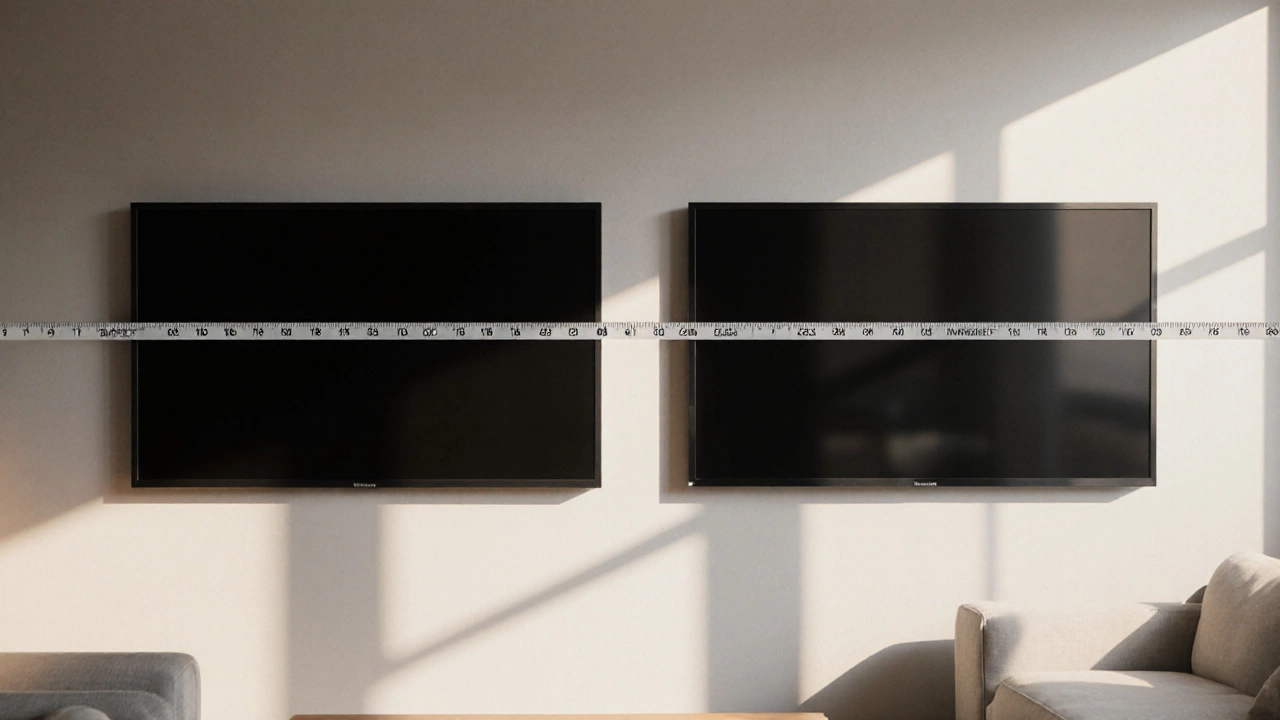TV Stand Sizing: How to Choose the Right Size for Your TV and Space
When you buy a new TV, the TV stand sizing, the process of matching a stand’s width, depth, and weight capacity to your TV’s size and design. Also known as TV furniture dimensions, it’s not just about making sure your 55-inch screen fits—it’s about keeping it stable, hidden from dust, and visually balanced in your room. A stand that’s too narrow makes your TV look like it’s about to tip. One that’s too wide eats up floor space and throws off your room’s proportions. Most people focus on screen size alone, but the real question is: What’s the stand’s actual footprint, and does it match your layout?
There’s a direct link between TV stand dimensions, the measurable width, depth, and height of a TV base designed to support a specific screen size and how your TV looks in the room. A 55-inch TV usually needs a stand between 48 and 54 inches wide. Go narrower, and the stand looks like an afterthought. Go wider, and it dominates the wall. Depth matters too—most modern TVs are slim, but if your stand is too shallow, cables will dangle awkwardly or your soundbar won’t fit underneath. And don’t forget weight capacity. A heavy OLED or QLED TV can weigh 40 pounds or more. A flimsy stand won’t cut it, even if the size looks right.
TV furniture, designed pieces built specifically to hold televisions, often with storage, cable management, and aesthetic coordination in mind isn’t just a shelf. It’s part of your living room’s structure. Think of it like a shoe for your TV—it has to fit snugly, support the weight, and match the style. If you’re using a console table, a media unit, or a floating shelf, each has different rules. A console table might offer drawers for remotes and game systems, but if it’s too tall, you’ll be looking up at the screen. A floating shelf looks clean but needs solid wall anchors and leaves no room for speakers. And if you’re going for a minimalist look, you still need clearance for ventilation. TVs breathe. So do their stands.
What you’ll find in the posts below isn’t just a list of sizes. It’s real-world advice from people who’ve bought the wrong stand, struggled with cable chaos, or ended up with a TV that looked like it was floating in space. You’ll see how a 55-inch TV needs more than just a 55-inch stand—it needs the right depth, the right legs, the right balance. You’ll learn why some stands look great in stores but fall apart at home. And you’ll get clear, no-fluff tips on measuring your space, checking weight limits, and avoiding the most common mistakes that turn a simple purchase into a frustrating mess. This isn’t about guessing. It’s about getting it right the first time.
65‑inch TV vs 60‑inch TV: Size Difference Explained
Find out exactly how much bigger a 65‑inch TV is than a 60‑inch model, see the width and height differences, and learn which TV stand fits each size perfectly.
View more